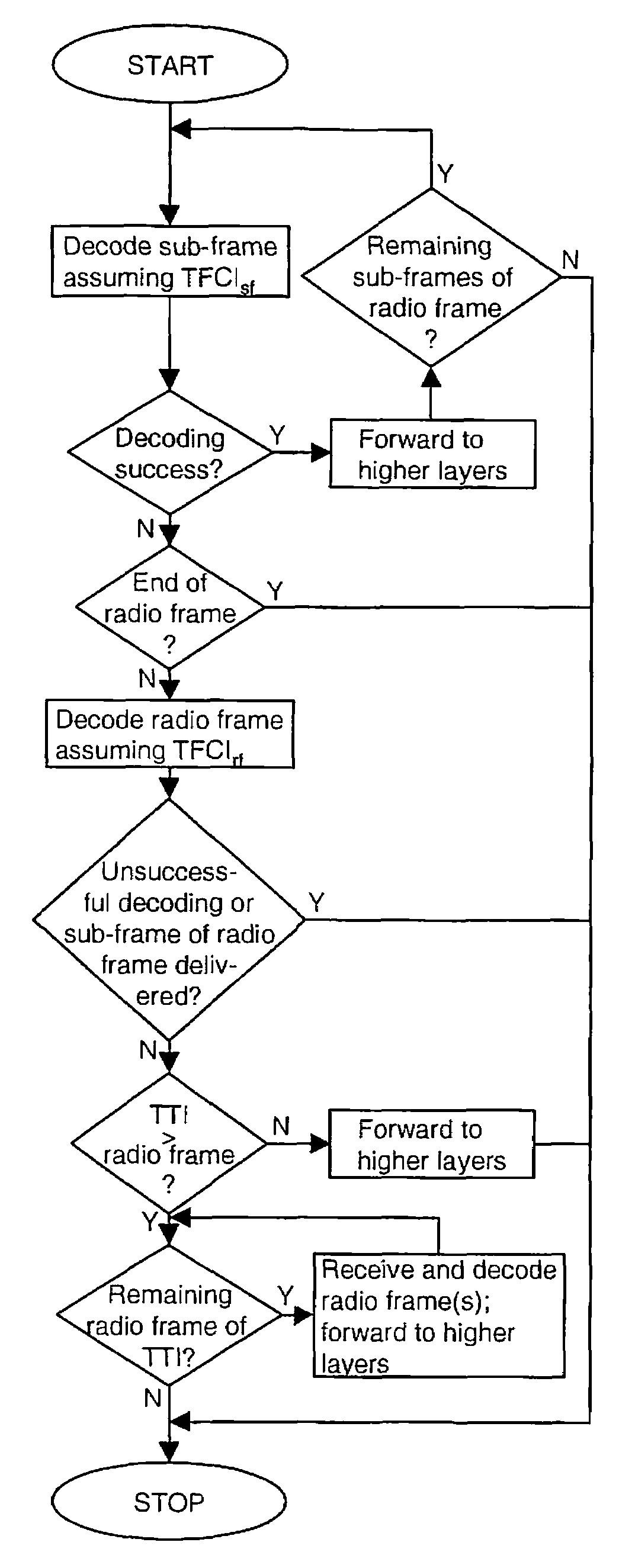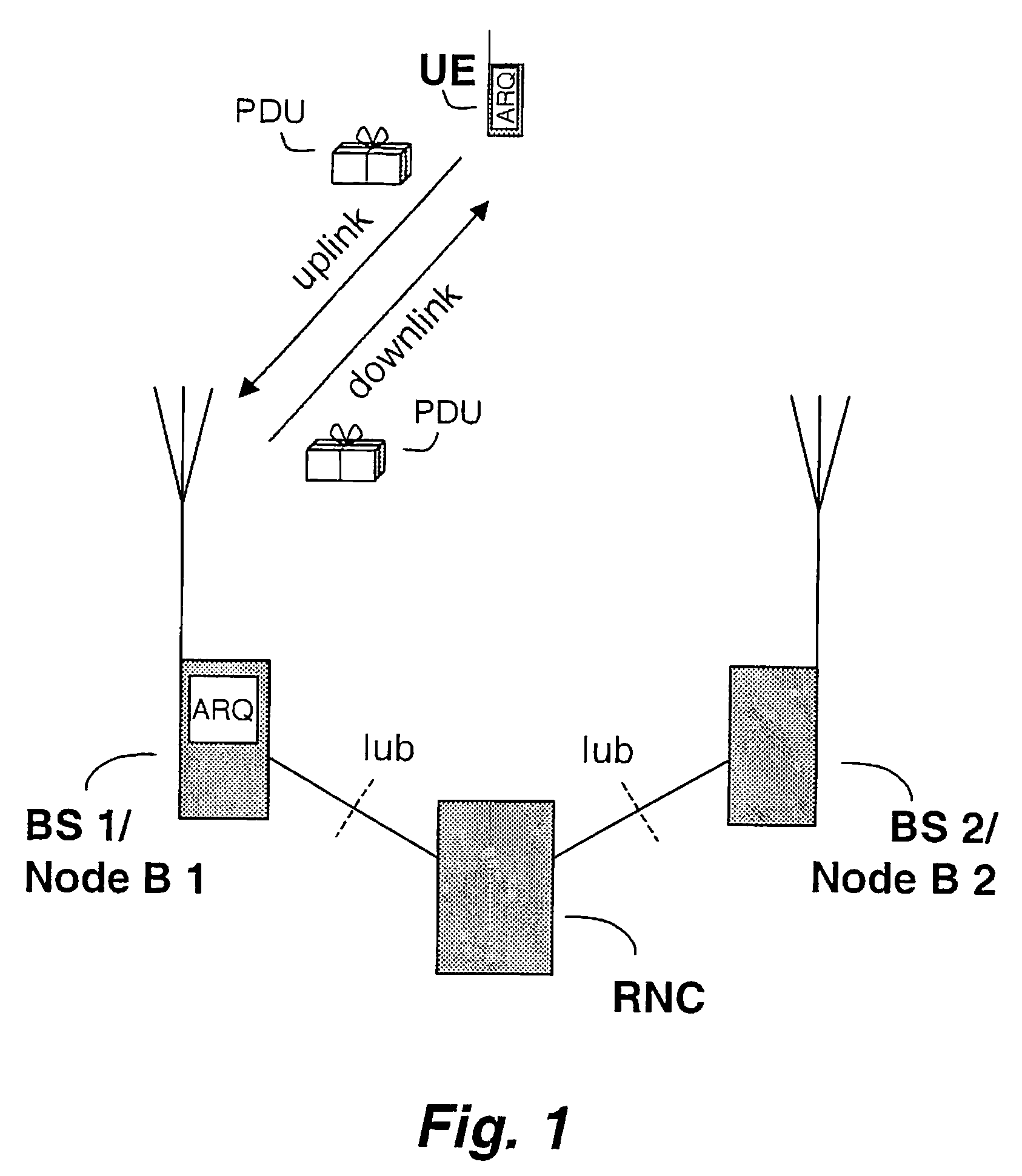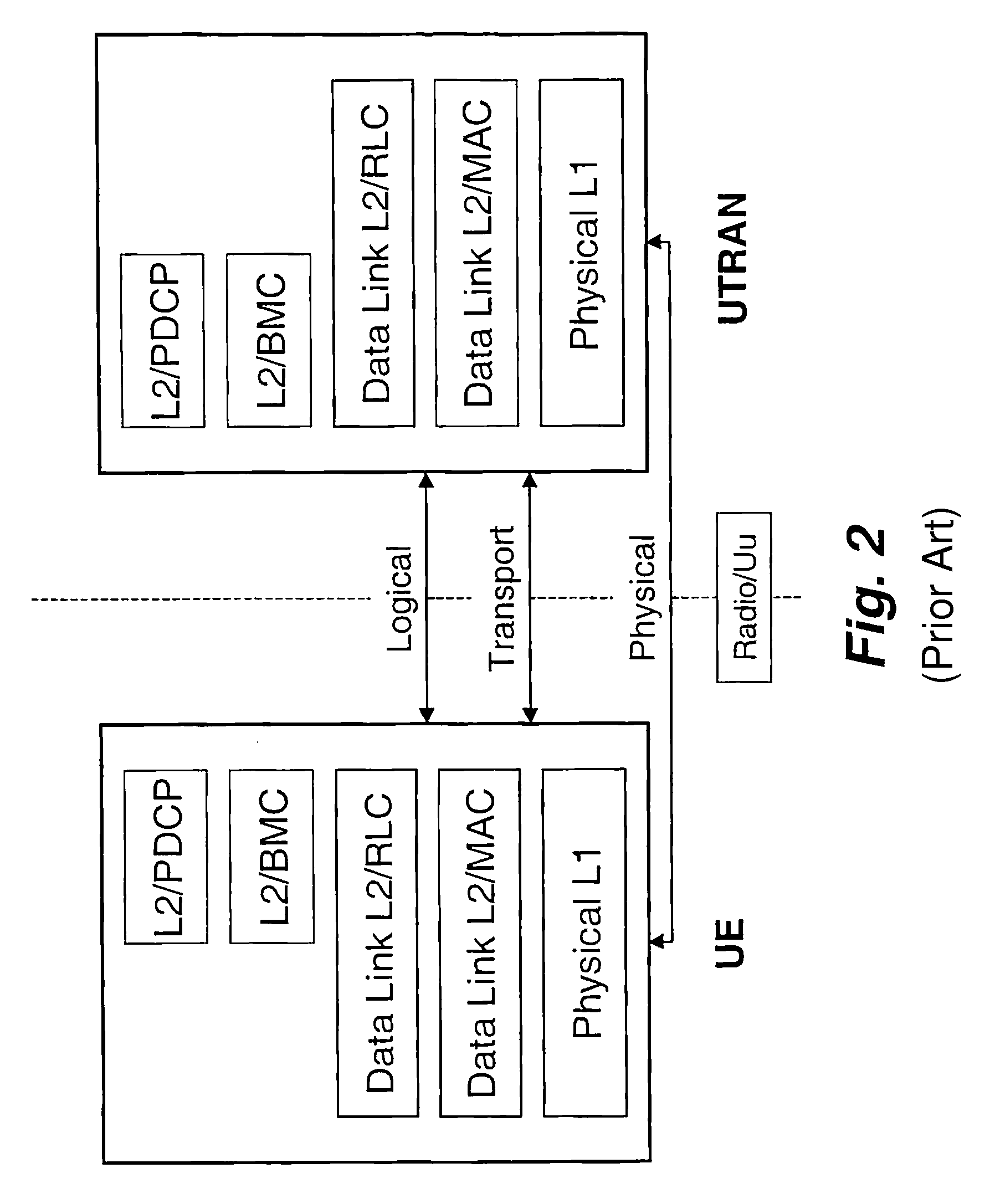Method and system of channel adaptation
a channel adaptation and channel technology, applied in the field of transmissions and retransmissions, can solve problems such as unfavorable code multiplexing of additional transport formats, delay problems identified for existing channel structures, and inability to implement additional transport formats
- Summary
- Abstract
- Description
- Claims
- Application Information
AI Technical Summary
Benefits of technology
Problems solved by technology
Method used
Image
Examples
second embodiment
[0077] the sub-frame and radio frame decoding are non-exclusive. This is illustrated in FIG. 7 reflected in that condition > of FIG. 6 is excluded and step rf>> entered unconditionally when all sub-frames of a radio frame have been candidate decoded. The outcomes of decoding sub-frames and entire radio frame, respectively, are weighted and compared and the outcome (entire radio frame or one or more sub-frames) with greatest likelihood of being correct is selected in step >. One such comparison would be to select between whether or not a sub-frame channel structure is superimposed depending on, which of the alternatives would correspond to the smallest number of transmission errors. In FIG. 7, TTI comprising a plurality of radio frames does not include candidate(s) selection for more than first radio frame. However, more radio frames of TTI could be included at the expense of increased buffering. When a radio frame is TFCI detected only one radio frame (the first) of TTI is required ...
third embodiment
[0078] a majority vote on the sub-frame decoding attempts of a received radio frame is determined prior to any decoding attempt of an entire radio frame. If, e.g., 3-5 out of 5 sub-frames are correctly decoded, transmissions are considered according to a sub-frame structure. Depending on false alarm rate and miss rate the vote threshold may be adjusted, e.g. requiring 4-5 correctly decoded sub-frames for considering data sent according to the sub-frame structure.
[0079]The preferred, second and third embodiments described above may be referred to as blind detection. However, it should be noted that according to the invention only TTI detection is blind. Once TTI is determined, TFCIrf and TFCIsf, respectively, is used to inform the receiver on control information, e.g. code rate.
[0080]On the transmitting side the terminal preferably decides whether or not to make use of the sub-frame channel structure according to needs and radio environment. The decision is based on one or more aspec...
PUM
 Login to View More
Login to View More Abstract
Description
Claims
Application Information
 Login to View More
Login to View More - R&D
- Intellectual Property
- Life Sciences
- Materials
- Tech Scout
- Unparalleled Data Quality
- Higher Quality Content
- 60% Fewer Hallucinations
Browse by: Latest US Patents, China's latest patents, Technical Efficacy Thesaurus, Application Domain, Technology Topic, Popular Technical Reports.
© 2025 PatSnap. All rights reserved.Legal|Privacy policy|Modern Slavery Act Transparency Statement|Sitemap|About US| Contact US: help@patsnap.com



